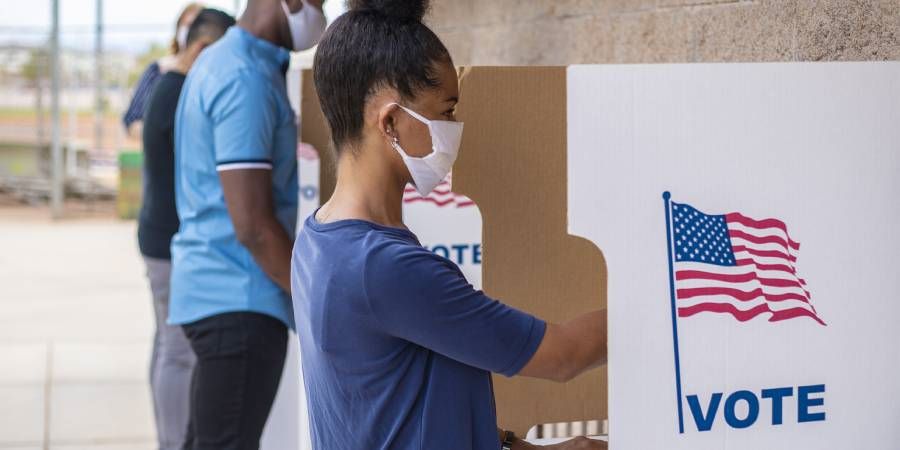by Kristina Hooper, Chief Global Strategist, Invesco Canada
This month, I’m watching five key issues that have the potential to impact global markets.
1. US stimulus talks
The clock is ticking. Businesses are closing, job growth is slowing, companies are announcing layoffs — and yet the federal government hasn’t approved any more stimulus despite a variety of warnings. The Business Roundtable, a group of chief executives from major corporations, warned last week that “communities across the country are on the precipice of a downward spiral” and are facing “irreparable damage.”1 Last week, we also heard from Federal Reserve Chair Jerome Powell, who again warned of the long-term damage that could be caused by a lack of fiscal stimulus: “household insolvencies and business bankruptcies would rise, harming the productive capacity of the economy and holding back wage growth.”2 He worried that “a prolonged slowing in the pace of improvement over time could trigger typical recessionary dynamics, as weakness feeds on weakness.” And that is a legitimate concern, given that we have already started to see that slowing in the pace of improvement. He reminded that it was because of massive monetary and fiscal policy stimulus in recent months that a typical longer-term recession was avoided — albeit temporarily. Powell urged the passage of not just any fiscal stimulus package, but a major one: “Too little support would lead to a weak recovery, creating unnecessary hardship for households and businesses.” I agree, but I would take it one step further and suggest that governments think of fiscal stimulus during the pandemic as akin to coupon payments on a bond. They need to be adequate and at regular intervals in order for the economy to continue to be supported in the face of serious headwinds. This is especially true in the US, which has no social safety net like many European countries.
And the federal government has taken baby steps toward another fiscal stimulus package, with House Speaker Nancy Pelosi and Treasury Secretary Steve Mnuchin in talks. Two weeks ago, the House of Representatives passed a second, watered-down version of the HEROES Act, which served two purposes, in my opinion: 1) it offered a compromise to Senate Republicans, who wanted a far smaller stimulus package than the $3+ trillion HEROES Act passed in May; and 2) it provided cover for Democratic members of Congress who are campaigning for re-election, so they could avoid being accused of inaction on the fiscal stimulus front. But early last week, President Donald Trump abruptly called off fiscal stimulus talks, sending stocks plummeting downward. It didn’t rattle me — I think of the stock market as President Trump’s “North Star,” and I believed he would quickly reverse course if he saw a sustained negative reaction on the part of stocks. He is also fighting for his political life and recognizes that a major fiscal stimulus package could help him win re-election. And so I wasn’t surprised to see that by Friday, he was advocating for a $1.8 trillion fiscal stimulus package. Therefore, I believe there is still a good chance that a decent-sized fiscal stimulus package may be passed before the election.
2. COVID-19 infections
In his speech last week, Powell also stated that a large rise in COVID-19 infections represents a major risk to the economy. But this is not a risk to just the US economy. Chris Williamson, Chief Business Economist at IHS Markit, noted that parts of Europe have been impacted negatively by a second wave of novel coronavirus infections: “Spain has been especially hard-hit as rising COVID-19 case numbers led to further disruptions to daily life. With the exception of the March-to-May period at the height of the first wave of infections, Spain’s service sector contraction in September was the largest recorded since November 2012.”3 He bluntly explained that “Much will depend on whether second waves of virus infections can be controlled.”
This second wave has been hard to control thus far in parts of Europe. We are seeing rising infection rates in a number of states in the US as well. There is legitimate concern that it could get worse as weather gets colder in much of Europe and the US, although I continue to believe levels of hospitalizations and deaths may be lower because of all that medical professionals have learned about how to treat the virus. The coming weeks will be crucial in indicating whether these countries can control the virus’s spread.
3. Mobility
As I have said before, in the absence of lockdowns, we need to look to mobility as a leading indicator of economic activity as opposed to stringency. That’s because with stringency measures (such as business closures, school closures and travel bans) at relatively low levels, individuals will make personal decisions about how safe it is to go out and spend. And if stringency measures rise — as they have in some countries — that will also be reflected in mobility data. In other words, we think of mobility as a proxy for demand.
Mobility in the US and UK has been well below normal, although it has been better in the eurozone and parts of Asia. But we can’t forget that mobility is closely interwoven with infection rates; I would expect mobility to go down as infections rise and individuals choose to stay home — or are told to stay home because governments have been forced to re-impose lockdowns. Suffice it to say we will be paying very close attention to mobility.
4. US presidential election polls
The stock market heaved a sigh of relief in recent days as US presidential election polls widened, suggesting a decisive Biden victory (which might turn the Senate Democratic as well).4 The key word here isn’t “Biden” — it’s “decisive.” If I had told you a year ago that in October 2020, the stock market would be positive about a Biden-Harris win, you might have questioned my sanity. But this has been one crazy year. For markets, I believe there is a much bigger fear than having a Democrat in the White House: a contested election.
In addition, I believe one critical reason markets seem comfortable with the idea of a “Blue Wave” is that it could very well mean a large stimulus package in 2021 — and that seems to outweigh any concerns about an increase in corporate taxes. I should note that while markets might be willing to wait until 2021 for a large stimulus package, I’m not sure the US economy can wait that long.
We will want to follow the polls closely, as a lot can change in a few weeks. I also don’t think we can ignore the possibility of a contested election even if the victory is decisive, although I don’t believe that is priced in at this point.
5. Brexit
America doesn’t have the corner on political uncertainty; the UK is also in the throes of turmoil. There is a key deadline coming up soon — Oct. 15 — for the UK to arrive at a trade deal with the European Union. The UK government recently confirmed that if no deal is reached by Oct. 15, it will walk away from negotiations.5 We assume that would result in a future trade relationship with the EU based upon World Trade Organization terms.
My colleague Paul Jackson explains: “The effect on the UK economy of a ‘no-deal’ outcome is difficult to know, but it is hard to imagine that going from free trade to restrained trade would be good.” He notes that, “Despite the uncertainty about the economic effects, financial markets have long since passed judgement,” noting weakness in sterling without UK equities benefiting from that weakness. As he explains, this Brexit gap “suggests that equity market participants think the UK economy has been fundamentally weakened by the divorce process.”
We will want to follow this closely to see if the UK can positively surprise in terms of its future trade relationship with the EU — and if UK equities react any differently — although I would caution not to hold your breath on this one.
This post was first published at the official blog of Invesco Canada.














